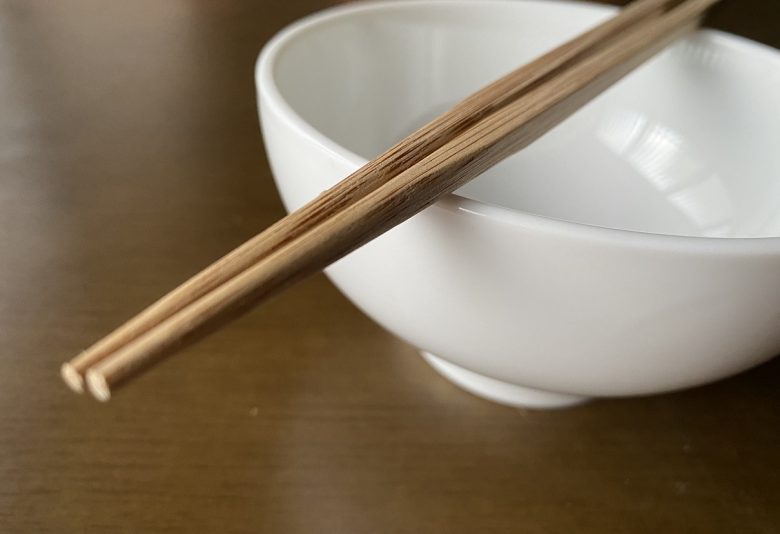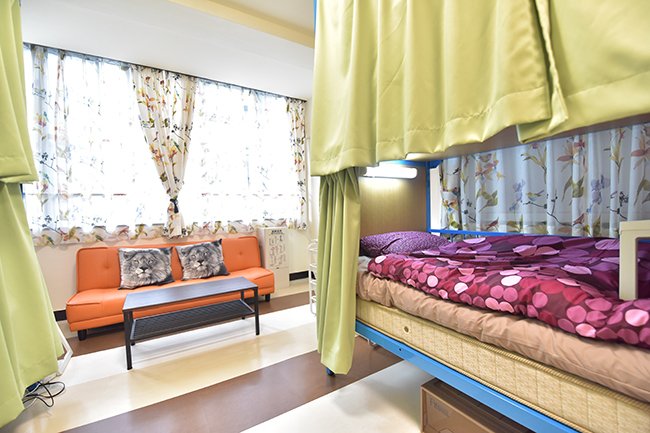
Bad chopsticks manners to best avoid
Recently we have been looking at some food related Sakura Tips, so today we focus on a key aspects of dining in Japan (or anywhere in Asia mostly), the use of chopsticks. Whether you have already made your trip to Japan or are getting prepared for it, it is common to find yourself battling with eating using chopsticks, and usually one of the things that shows how much time someone has spent in Japan is their ability with them.
Fortunately, if you shall be staying at a SAKURA HOUSE share house or guest house in Tokyo, a machiya style share house in Kyoto or a lovely traditional house by the beach in Izu, you may have the time to even get coached by other housemates or roommates on how to best approach the usage of chopsticks. One thing is for sure, practice makes mastery, but one thing to not left unknown is the proper manner on the moment of eating. Here we look at a few taboos to best avoid while enjoying your Japanese meal with chopsticks.
Yose-bashi・寄せ箸
This refers to using your chopsticks to pull dishes towards you. Japanese meals are usually composed of several “okazu” (side dishes), so it is normal to have several things prepared before you on separate dishes. When wanting to try something, it is best to get the dish with your hand and serve yourself with the chopsticks instead.
Kasane-bashi・重ね箸
This manner extends from the usage of chopsticks themselves, and it refers to just eating one of the dishes on the table. Is best to avoid focusing on just one and try all of them throughout the meal.
Kuwae-bashi・咥え箸
Although used to take food to your mouth, it is not well mannered to leave the chopsticks in your mouth. After having your bite, simply hold them in your hand or leave them on the “hashioki” (chopstick rest). Also similar is “kami-bashi”, biting on your chopsticks while doing something else.
Watashi-bashi・渡し箸
In a casual setting it is fine to rest your chopsticks across the top of your bowl, but on a formal occasion, it is best to avoid this and use the “hashioki” instead. If for any reason non is provided, it is possible to use the “hashi-bukuro”, or paper sleeve in which the chopsticks are served in.
Utsuri-bashi・移り箸
For first timers particularly, it can be common to pick around the dishes without eating, trying to see what’s in them. However, this is best to be avoided by asking your companion, the waiter or the chef directly. Having a good look at the menu in advance is also good, but tasting it is the best way to go (provided you do not have any allergies).
Saguri-bashi・探り箸
In relation to the previous manner, “saguri-bashi” refers particularly to stirring your chopsticks inside one of the dishes like if you were looking for something.
Sashi-bashi・刺し箸
If you are having a hard time eating with chopsticks, it is best to ask for a fork and knife, but it is definitely bad mannered to pierce your food with the chopsticks.
Mogi-bashi・もぎ箸
Rice is sticky, and it can easily fall on your chopsticks while eating and stay there. This being said, it is best to take your time while eating and avoid this from happening as “mogi-bashi” refers to liking or biting off bits of food that are stuck to your chopsticks. Also tempting is to lick any leftover from your chopsticks, which is consider “neburi-bashi”.
Arai-bashi・洗い箸
It can also be tempting to get rid of any leftover on the chopsticks by sinking them in miso soup or similar soup dish, but this is also considered bad mannered.
Furiage-bashi・振り上げ箸
It’s always nice to accompany a good meal with a great conversation, specially if you are getting to now your housemates while in Japan, but when doing so, make sure your chopsticks are left on the table instead of waving them around.
Sashi-bashi・指し箸 (not to be confused with 刺し箸 previously mentioned)
We may have been told several times as children to avoid pointing at other people, as it is considered rude, and chopsticks are no exception. Never point at someone directly with your chopsticks as it can be taken as a threat or sign of agression.
Namida-bashi・涙箸
After the rice, one staple of most Japanese meals is the miso soup, and with it all the amazing ingredients. While picking any of the contents in the soup, it is well mannered to take a bite after the soup broth stops dripping as this is considered “namida-bashi”, with “namida” meaning “tear” in Japanese.
Seseri-bashi・せせり箸
Whatever your meal menu may be, it is normal to sometimes get food stuck between your teeth. However, chopsticks are not toothpicks, so it is best to avoid using them as such.
Tataki-bashi・叩き箸
It can be tempting to stick your chopsticks in the rice vertically to avoid them from falling, but this is the biggest taboo in this list since it is actually part of the rites used in Buddhist funerals.
Oshikomi-bashi・押し込み箸
If any of the dishes prepared has something too big to eat in one mouthful, it is best to simply take a bite at it instead of bushing it into the mouth with your chopsticks.
Mayoi-bashi・迷い箸
With all the delicious things the Japanese cuisine has, it is normal to not know what to try first. In doing so, it is best take a look at the dishes first and approach them with your chopsticks one you have decided what to eat, rather than waving them on each dish undecidedly.
Kara-bashi・空箸
Continuing with the indecision when taking food, “kara-bashi” refers to taking food with your chopsticks but then leaving it down by returning it to the same dish.
Hiroi-bashi・拾い箸
Sharing food can be a good way to try different flavors and get to know what others like to eat, but by all menas, please do not exchange foods directly through your chopsticks. As with “tate-bashi”, this is linked to another of the rites of the Buddhist funerals.
Kakikomi-bashi・かき込み箸
If you are running out of time or have difficulty picking up your food, it can feel normal to lift the bowl towards your mouth and push food in with your chopsticks, but this is another common mistake. If dining at home, it can be fine, but in a formal occasion, it is best to be avoided.
Otoshi-bashi・落とし箸
This one is normal in all settings, and is one you have probably been scolded about by your parents. “Otoshi-bashi” refers to avoid dropping your chopsticks to the ground.
In general, it is best to take one’s time when having a meal and enjoy the many flavors and textures. The belief of being grateful to the food being eaten and treating it with respect is well rooted into the Japanese culture and is a great guideline to have a most delightful dining experience.
SAKURA HOUSE
Nishi-Shinjuku K-1 Bldg. 2F
7-2-6 Nishi-Shinjuku, Shinjuku-Ku Tokyo, Japan
Postal code: 160-0023
Google map
- From Japan:
- 03-5330-5250
- From outside Japan:
- +81-3-5330-5250
- Mail:
- [email protected]
- Office hours:
- 8:50 am to 8:00 pm
We are open every day of the year.
- Tokyo time:
- 20:28







